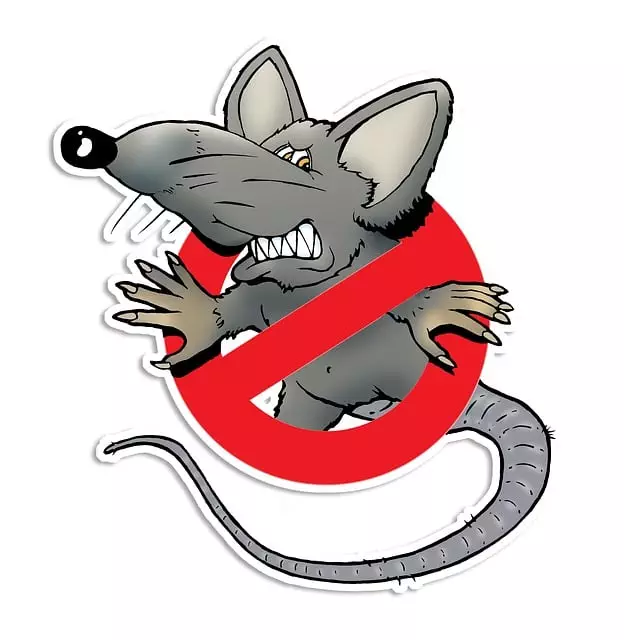Rodent infestations require expert intervention from professional rodent control specialists who employ a comprehensive strategy. This includes thorough inspections, sanitation, exclusion techniques, and targeted treatments using safe repellents or traps. By blocking entry points, eliminating food sources, and adhering to regulations, they ensure effective eradication while protecting inhabitants and the environment. These professionals use humane, eco-friendly methods, such as live traps and sound wave devices, prioritizing safety over toxicity. Comprehensive preparation, including property inspections and transparent estimates, is crucial. Post-extermination, maintaining cleanliness, sealing entry points, and regular inspections prevent future infestations. Combining these measures with professional rodent control ensures a lasting, safe environment.
Rodent infestations can transform your living or working space into a stressful, unsanitary environment. Understanding these problems is the first step towards effective professional rodent control. This comprehensive guide delves into various aspects of dealing with rodents, from identifying types and common entry points to navigating the role of exterminators, safe removal methods, and long-term prevention strategies. Discover how pre-treatment preparation and post-extermination care contribute to maintaining a rodent-free space, ensuring peace of mind.
Understanding Rodent Infestations: Types and Common Entry Points

Rodent infestations can vary greatly in scope and type, requiring tailored approaches for effective professional rodent control. Common rodents include rats and mice, both known for their remarkable adaptability and ability to find entry points into homes and businesses. Understanding how they gain access is key to prevention and control. Rats, for instance, are excellent climbers and swimmers, entering through pipes, sewers, gaps in walls, or even attics. Mice, on the other hand, prefer smaller openings, such as cracks in foundations, gaps around utility lines, or unscreened vents.
Professional rodent control experts employ a multi-faceted approach to address these infestations, combining inspection, sanitation, exclusion, and targeted treatments. By identifying and sealing entry points, eliminating food sources, and using appropriate repellents or traps, professionals ensure a comprehensive solution that not only removes existing rodents but also prevents future invasions. This involves meticulous planning, safety precautions, and adherence to local regulations, ensuring both the effectiveness of the control measures and the well-being of inhabitants and the environment.
The Role of Professional Exterminators in Effective Rodent Control

Professional exterminators play a pivotal role in effective rodent control, offering specialized knowledge and expertise that homeowners or businesses might lack. They are equipped to handle infestations swiftly and efficiently using advanced techniques and technologies designed specifically for rodents. These professionals are trained to identify various rodent species, understand their behaviors, and locate their hidden nests and entry points. This knowledge allows them to implement tailored strategies, ensuring the humane and effective removal of rodents from properties.
Moreover, professional exterminators utilize a range of safe and eco-friendly products approved for pest control. They follow strict protocols to minimize risks to human health and the environment, addressing potential concerns regarding chemical exposure. By employing these methods, they provide long-lasting solutions, preventing rodent re-infestations and maintaining a clean, healthy living or working space.
Safe and Humane Methods for Rodent Removal

When it comes to professional rodent extermination, humane methods are both ethical and effective. Instead of relying on toxic chemicals that can be harmful to pets and children, modern professionals employ a range of safe techniques designed to remove rodents humanely. This includes traps specifically designed to capture mice or rats alive, allowing for relocation instead of killing. These traps are often baited with attractive scents or foods, encouraging rodents to enter without causing them undue stress or injury.
Additionally, professionals may utilize sound waves or ultrasonic devices that repel rodents without harm. Such non-lethal methods not only ensure the safety of your family and pets but also promote a more sustainable approach to rodent control. By choosing humane techniques, you contribute to the overall well-being of the ecosystem and avoid potential health risks associated with toxic substances. This is especially important in residential areas or places where children and domestic animals are present.
Pre-Treatment Preparation: What to Expect Before the Extermination

Before a professional rodent control service begins, it’s important to understand what to expect during the pre-treatment preparation phase. This step is crucial in ensuring the success of the extermination process and minimizing disruptions. Typically, the initial assessment involves a thorough inspection of your property by the exterminator to identify entry points, nesting areas, and signs of rodent activity. They will then provide an estimate outlining the scope of work, treatment methods, and potential costs.
During this period, you may be asked to take certain precautions. This might include temporarily removing valuable items from affected areas, ensuring proper food storage, and sealing any visible entry points with materials like steel wool or caulk. It’s essential to follow these guidelines carefully as they contribute to the overall effectiveness of the treatment and help prevent future infestations. Effective communication between you and the professional exterminator is key to achieving optimal results in rodent control.
Post-Extermination Care: Ensuring Your Space Remains Rodent-Free

After a professional rodent extermination, maintaining a rodent-free environment is crucial. The first step involves ensuring your space remains secure by sealing entry points such as gaps in walls, floors, and ceilings. This prevents new rodents from infiltrating your property. Regular inspections are also vital to identifying any signs of potential re-entry or new infestations early on.
Additionally, keeping your living and working areas clean is essential for long-term protection against rodents. Storage of food items in airtight containers, regular cleaning, and quick disposal of garbage can significantly deter rodents from seeking shelter and food sources in your premises. Employing these preventive measures, coupled with professional rodent control services, will help maintain a safe and hygienic environment free from unwelcome visitors.
Preventing Future Infestations: Long-Term Solutions for Rodent Control

Rodent infestations can be a persistent problem, so preventing future ones is key to long-term professional rodent control. In addition to immediate extermination, there are several strategies that experts recommend to deter rodents from returning. One effective method is sealing entry points into your home or business, such as gaps in walls, floors, or doors. This physical barrier prevents rodents from finding their way back in and creates a more secure environment.
Regular maintenance and cleanliness are also vital tools in professional rodent control. Keeping areas free of food debris and ensuring proper garbage disposal reduces the allure of your property to rodents. Additionally, maintaining a clean space minimizes potential nesting sites, making it less inviting for these pests. Combining these preventive measures with consistent inspections can significantly reduce the likelihood of future rodent infestations, providing lasting peace of mind.
